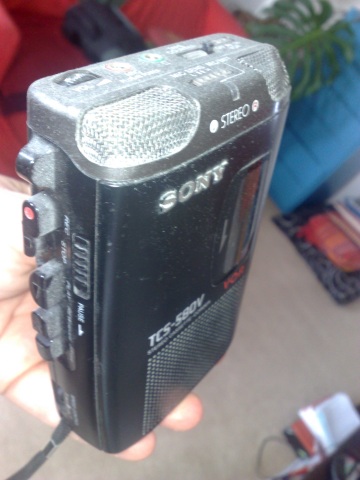 In the scheme of things, portable music kicked off in the late 70's with the Sony Walkman, but it was the Diamond Rio MP3 Player that brought digital music out of the home and into the streets. Apple cracked into the Gigabyte market with the iPods, and since then capacities and expectations have been raised by every manufacturer. It's now expected that a modern smartphone has the ability to play music well, store a significant number of albums and singles, be able to navigate this large collection with ease, and all without having a significant hit on the battery life.
In the scheme of things, portable music kicked off in the late 70's with the Sony Walkman, but it was the Diamond Rio MP3 Player that brought digital music out of the home and into the streets. Apple cracked into the Gigabyte market with the iPods, and since then capacities and expectations have been raised by every manufacturer. It's now expected that a modern smartphone has the ability to play music well, store a significant number of albums and singles, be able to navigate this large collection with ease, and all without having a significant hit on the battery life.
But put aside the spec list and requirements, it's the emotional connection that the music makes which is important in the growth of smartphones over the last few years. Take a step back and think about your life, somewhere close to the surface will be a piece of music that's indelibly fixed to a moment in your life (it's likely there are more than one, to be honest). It's these moments that in years past would be passed around on blank C60 cassettes, taken on long car journeys and listened to constantly when the summer holidays were over to remember the good times.
It's natural to want to have these tracks to your life close to you, and what bit of technology do you always have with you? Your mobile. I know Nokia have talked about the three screens approach to life (such as at their Go Play event, where they announced Ovi) and how the phone is one of the few objects you are pretty much guaranteed to pick up before you leave the house. And one of the reasons for me that I always pick up my smartphone is that it has my music on it.
I have a number of smartphones to hand that I can use, but there's always a moment when I know I've made the mental move from an older model. Which smartphone gets the latest downloaded album first? Which smartphone gets the podcasts copied over? When will I spend the time to move over the “Melancholy” playlist? That's the moment of the move, because at that point the smartphone becomes more than a piece of plastic, it becomes a part of me.
Someone asked in the comments of AAS recently why I was still soldiering on with the Nokia X6 when it seemed to frustrate me at every opportunity. That set me thinking, because the only obvious difference was the capacitive screen, and that wasn't it (I was more than happy having switched temporarily back to the resistive screened 5230 during the March USA Challenge). It came down to the music. I was using the X6 as my day to day music device. When it first arrived I carried it for testing, but my E75 was the device that I grabbed if I only grabbed one. Then the music moved over and the E75 was finally deposed for the X6.
It also explains the fascination from every manufacturer with music. Be it providing a music-centric device, music stores to purchase music, the path to sales is to make something attractive, to create a need or desire in the consumer. Music already does that, so if you can promise and deliver the ability to get all the music you want in your life on a smartphone then you have a powerful marketing message.
And then there are third party music services – there's a reason that Americans want to get a hold of Spotify in their region – these services feed a demand for music (there is Pandora, but that is recommendation engine, not a music on demand product). Any company that can serve that in a timely and cost effective manner has a winning product. Not only that, but human nature will serve to increase the bond of loyalty that grows between the user and these products.
But all of this can fall down if the on-device experience is poor. I was shocked just how flaky the X6 music player was compared to, say, the 5800. I'm even more shocked that it's not been speeded up through the various updates. I've made the emotional connection now and we get through together as a team, but it was a close run thing. Getting the music application right is key – and that is an ever changing target.

Sharing music with your smartphone is fun!
When the N95 was released, I was happy to declare that Nokia's update to the music playing application was probably the most advanced and usable design that was then on the market. Since then a certain iPhone has appeared, with its own UI ideas; Microsoft's Zune has had its own (peculiar) ideas in how to present music, and the Symbian default player has slipped back, to the point that it is now a weak point in the ensemble of applications.
One of the first things I'll be looking at on the Symbian^3 devices is the music player. How much has it been altered to make use of the touch screens, how easy it is to find things, how well it runs in the background, the ease of navigation. So what's it to be? So Mr N8 (or any other device)... can you tempt me away from the X6? Make me fall in love with my music (and its access) and I'll fall in love with the device.
-- Ewan Spence, May 2010.
